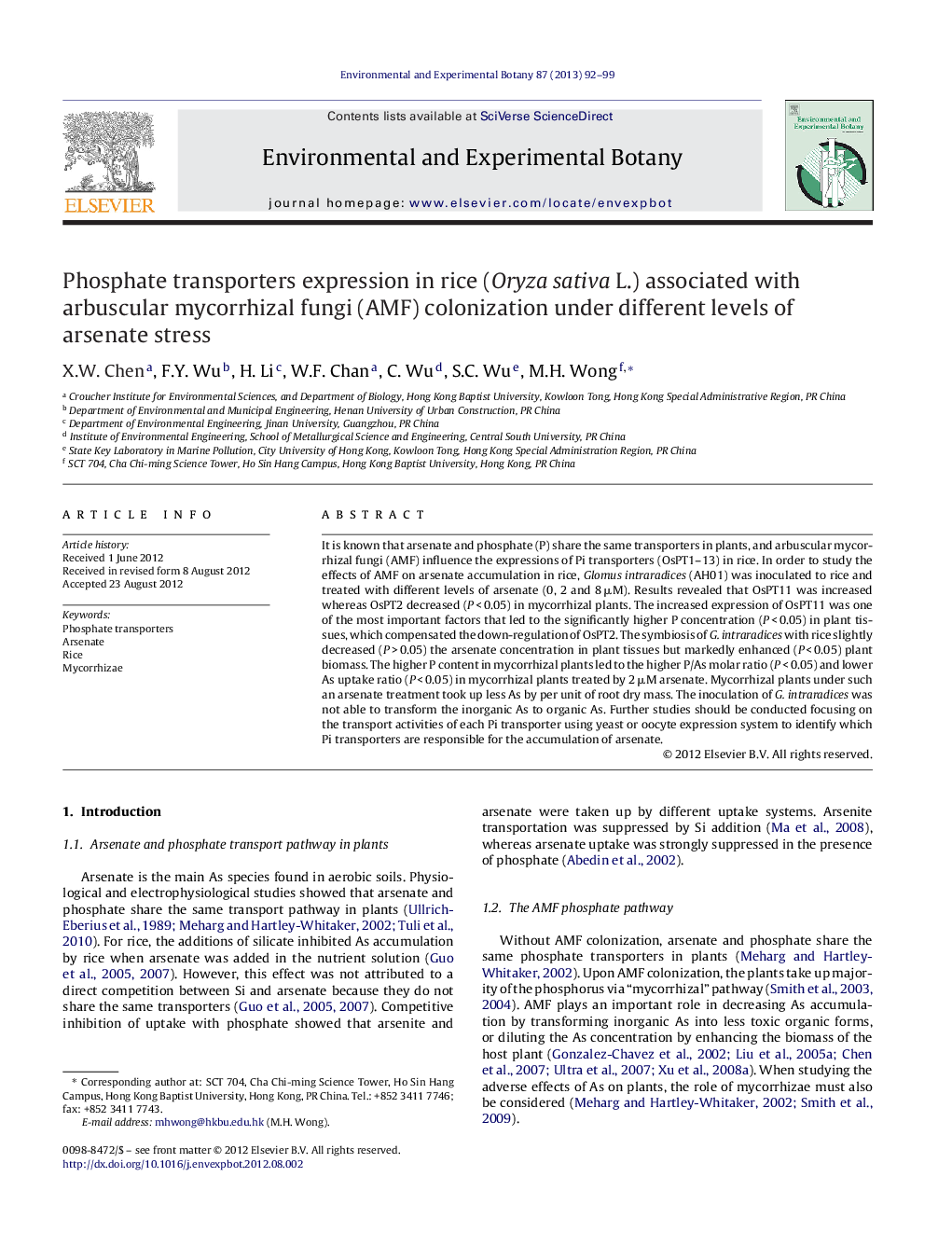| Article ID | Journal | Published Year | Pages | File Type |
|---|---|---|---|---|
| 4554580 | Environmental and Experimental Botany | 2013 | 8 Pages |
It is known that arsenate and phosphate (P) share the same transporters in plants, and arbuscular mycorrhizal fungi (AMF) influence the expressions of Pi transporters (OsPT1–13) in rice. In order to study the effects of AMF on arsenate accumulation in rice, Glomus intraradices (AH01) was inoculated to rice and treated with different levels of arsenate (0, 2 and 8 μM). Results revealed that OsPT11 was increased whereas OsPT2 decreased (P < 0.05) in mycorrhizal plants. The increased expression of OsPT11 was one of the most important factors that led to the significantly higher P concentration (P < 0.05) in plant tissues, which compensated the down-regulation of OsPT2. The symbiosis of G. intraradices with rice slightly decreased (P > 0.05) the arsenate concentration in plant tissues but markedly enhanced (P < 0.05) plant biomass. The higher P content in mycorrhizal plants led to the higher P/As molar ratio (P < 0.05) and lower As uptake ratio (P < 0.05) in mycorrhizal plants treated by 2 μM arsenate. Mycorrhizal plants under such an arsenate treatment took up less As by per unit of root dry mass. The inoculation of G. intraradices was not able to transform the inorganic As to organic As. Further studies should be conducted focusing on the transport activities of each Pi transporter using yeast or oocyte expression system to identify which Pi transporters are responsible for the accumulation of arsenate.
► The expression of OsPT11 increased and OsPT2 decreased in mycorrhizal plant. ► Glomus intraradices markedly enhanced rice plant biomass. ► Higher P content in mycorrhizal plants led to higher P/As ratio. ► Lower As uptake ratio observed in mycorrhizal plants.
